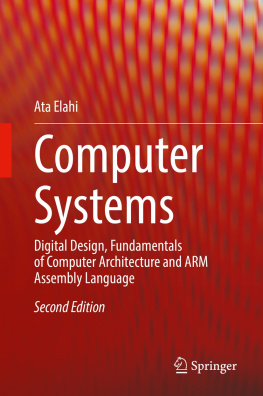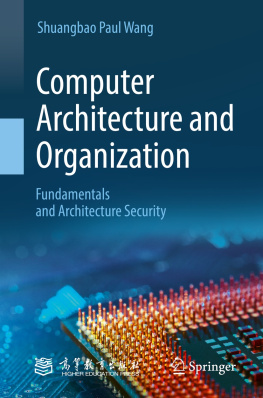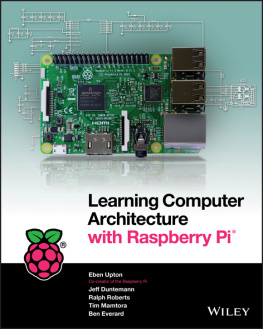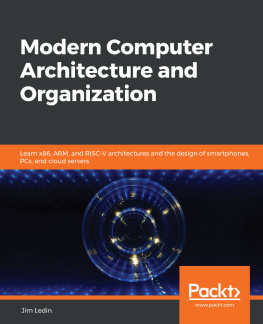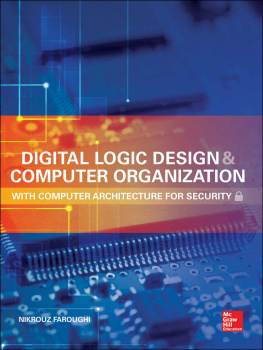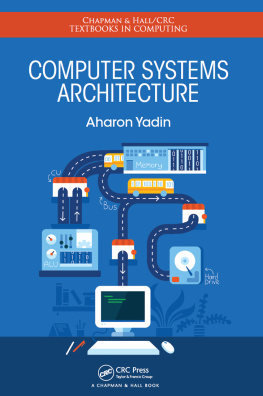John L. Hennessy - Computer Architecture
Here you can read online John L. Hennessy - Computer Architecture full text of the book (entire story) in english for free. Download pdf and epub, get meaning, cover and reviews about this ebook. year: 2019, publisher: Elsevier Inc., genre: Home and family. Description of the work, (preface) as well as reviews are available. Best literature library LitArk.com created for fans of good reading and offers a wide selection of genres:
Romance novel
Science fiction
Adventure
Detective
Science
History
Home and family
Prose
Art
Politics
Computer
Non-fiction
Religion
Business
Children
Humor
Choose a favorite category and find really read worthwhile books. Enjoy immersion in the world of imagination, feel the emotions of the characters or learn something new for yourself, make an fascinating discovery.

- Book:Computer Architecture
- Author:
- Publisher:Elsevier Inc.
- Genre:
- Year:2019
- Rating:5 / 5
- Favourites:Add to favourites
- Your mark:
- 100
- 1
- 2
- 3
- 4
- 5
Computer Architecture: summary, description and annotation
We offer to read an annotation, description, summary or preface (depends on what the author of the book "Computer Architecture" wrote himself). If you haven't found the necessary information about the book — write in the comments, we will try to find it.
Computer Architecture — read online for free the complete book (whole text) full work
Below is the text of the book, divided by pages. System saving the place of the last page read, allows you to conveniently read the book "Computer Architecture" online for free, without having to search again every time where you left off. Put a bookmark, and you can go to the page where you finished reading at any time.
Font size:
Interval:
Bookmark:
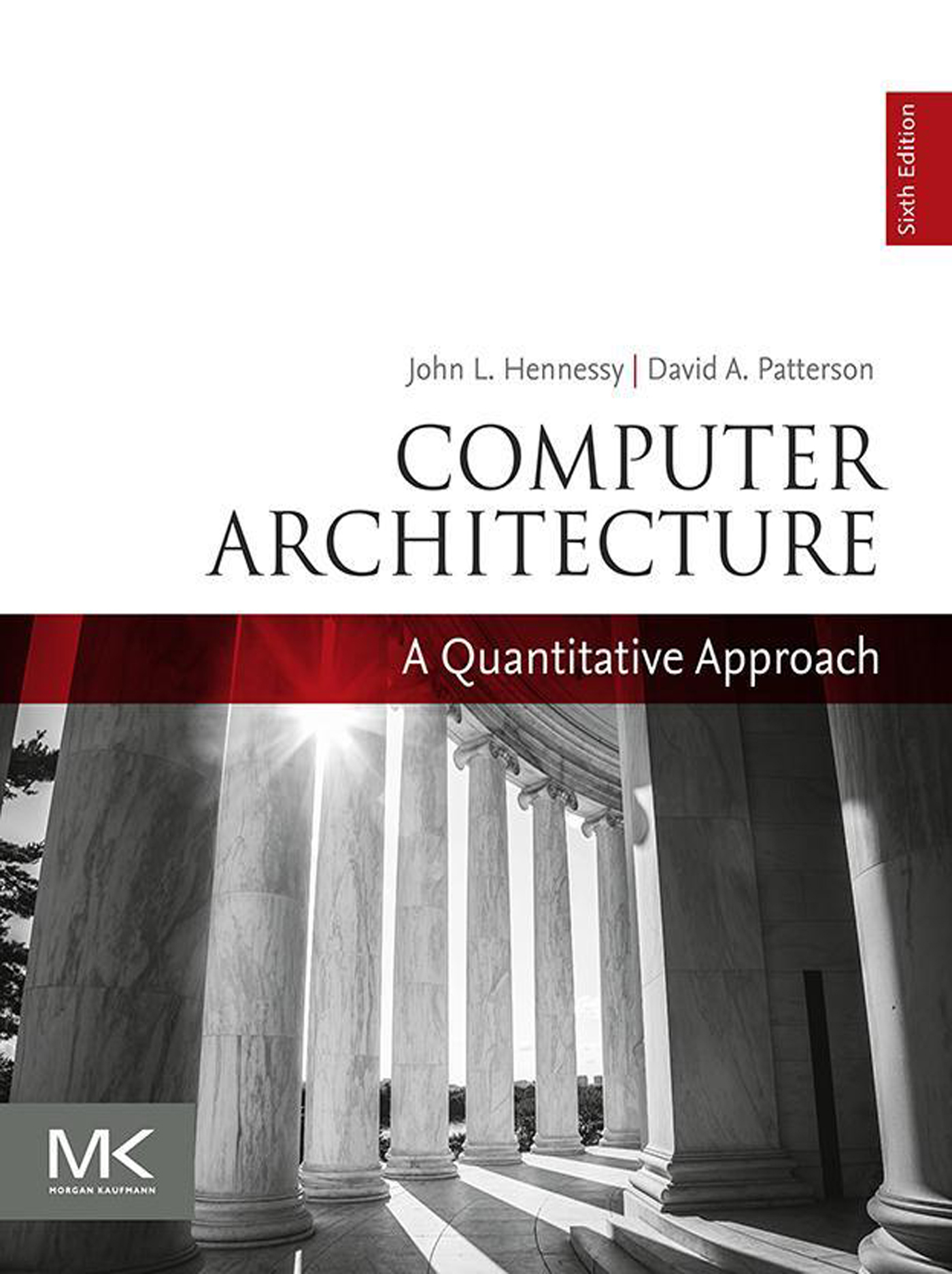
- Tables in 1
- Figures in 1
- Figures in 2
- Figures in 3
- Figures in 4
- Figures in 5
- Figures in 6
- Figures in 7
- Figures in Appendix A
- Figures in Appendix B
- Figures in Appendix C
- Figures in Appendix D
- Figures in Appendix E
- Figures in Appendix F
- Figures in Appendix G
- Figures in Appendix H
- Figures in Appendix I
- Figures in Appendix J
- Figures in Appendix K
- Figures in Appendix M
Sixth Edition
John L. Hennessy
Stanford University
David A. Patterson
University of California, Berkeley
With Contributions by
Krste Asanovi
University of California, Berkeley
Jason D. Bakos
University of South Carolina
Robert P. Colwell
R&E Colwell & Assoc. Inc.
Abhishek Bhattacharjee
Rutgers University
Thomas M. Conte
Georgia Tech
Jos Duato
Proemisa
Diana Franklin
University of Chicago
David Goldberg
eBay
Norman P. Jouppi
Sheng Li
Intel Labs
Naveen Muralimanohar
HP Labs
Gregory D. Peterson
University of Tennessee
Timothy M. Pinkston
University of Southern California
Parthasarathy Ranganathan
David A. Wood
University of WisconsinMadison
Cliff Young
Amr Zaky
University of Santa Clara

![]()
Although important concepts of architecture are timeless, this edition has been thoroughly updated with the latest technology developments, costs, examples, and references. Keeping pace with recent developments in open-sourced architecture, the instruction set architecture used in the book has been updated to use the RISC-V ISA.
from the foreword by Norman P. Jouppi, Google
Computer Architecture: A Quantitative Approach is a classic that, like fine wine, just keeps getting better. I bought my first copy as I finished up my undergraduate degree and it remains one of my most frequently referenced texts today.
James Hamilton, Amazon Web Service
Hennessy and Patterson wrote the first edition of this book when graduate students built computers with 50,000 transistors. Today, warehouse-size computers contain that many servers, each consisting of dozens of independent processors and billions of transistors. The evolution of computer architecture has been rapid and relentless, but Computer Architecture: A Quantitative Approach has kept pace, with each edition accurately explaining and analyzing the important emerging ideas that make this field so exciting.
James Larus, Microsoft Research
Another timely and relevant update to a classic, once again also serving as a window into the relentless and exciting evolution of computer architecture! The new discussions in this edition on the slowing of Moore's law and implications for future systems are must-reads for both computer architects and practitioners working on broader systems.
Parthasarathy (Partha) Ranganathan, Google
I love the Quantitative Approach books because they are written by engineers, for engineers. John Hennessy and Dave Patterson show the limits imposed by mathematics and the possibilities enabled by materials science. Then they teach through real-world examples how architects analyze, measure, and compromise to build working systems. This sixth edition comes at a critical time: Moores Law is fading just as deep learning demands unprecedented compute cycles. The new chapter on domain-specific architectures documents a number of promising approaches and prophesies a rebirth in computer architecture. Like the scholars of the European Renaissance, computer architects must understand our own history, and then combine the lessons of that history with new techniques to remake the world.
Cliff Young, Google
John L. Hennessy is a Professor of Electrical Engineering and Computer Science at Stanford University, where he has been a member of the faculty since 1977 and was, from 2000 to 2016, its 10th President. He currently serves as the Director of the Knight-Hennessy Fellowship, which provides graduate fellowships to potential future leaders. Hennessy is a Fellow of the IEEE and ACM, a member of the National Academy of Engineering, the National Academy of Science, and the American Philosophical Society, and a Fellow of the American Academy of Arts and Sciences. Among his many awards are the 2001 Eckert-Mauchly Award for his contributions to RISC technology, the 2001 Seymour Cray Computer Engineering Award, and the 2000 John von Neumann Award, which he shared with David Patterson. He has also received 10 honorary doctorates.
In 1981, he started the MIPS project at Stanford with a handful of graduate students. After completing the project in 1984, he took a leave from the university to cofound MIPS Computer Systems, which developed one of the first commercial RISC microprocessors. As of 2017, over 5 billion MIPS microprocessors have been shipped in devices ranging from video games and palmtop computers to laser printers and network switches. Hennessy subsequently led the DASH (Director Architecture for Shared Memory) project, which prototyped the first scalable cache coherent multiprocessor; many of the key ideas have been adopted in modern multiprocessors. In addition to his technical activities and university responsibilities, he has continued to work with numerous start-ups, both as an early-stage advisor and an investor.
David A. Patterson became a Distinguished Engineer at Google in 2016 after 40 years as a UC Berkeley professor. He joined UC Berkeley immediately after graduating from UCLA. He still spends a day a week in Berkeley as an Emeritus Professor of Computer Science. His teaching has been honored by the Distinguished Teaching Award from the University of California, the Karlstrom Award from ACM, and the Mulligan Education Medal and Undergraduate Teaching Award from IEEE. Patterson received the IEEE Technical Achievement Award and the ACM Eckert-Mauchly Award for contributions to RISC, and he shared the IEEE Johnson Information Storage Award for contributions to RAID. He also shared the IEEE John von Neumann Medal and the C & C Prize with John Hennessy. Like his co-author, Patterson is a Fellow of the American Academy of Arts and Sciences, the Computer History Museum, ACM, and IEEE, and he was elected to the National Academy of Engineering, the National Academy of Sciences, and the Silicon Valley Engineering Hall of Fame. He served on the Information Technology Advisory Committee to the President of the United States, as chair of the CS division in the Berkeley EECS department, as chair of the Computing Research Association, and as President of ACM. This record led to Distinguished Service Awards from ACM, CRA, and SIGARCH. He is currently Vice-Chair of the Board of Directors of the RISC-V Foundation.
Font size:
Interval:
Bookmark:
Similar books «Computer Architecture»
Look at similar books to Computer Architecture. We have selected literature similar in name and meaning in the hope of providing readers with more options to find new, interesting, not yet read works.
Discussion, reviews of the book Computer Architecture and just readers' own opinions. Leave your comments, write what you think about the work, its meaning or the main characters. Specify what exactly you liked and what you didn't like, and why you think so.

